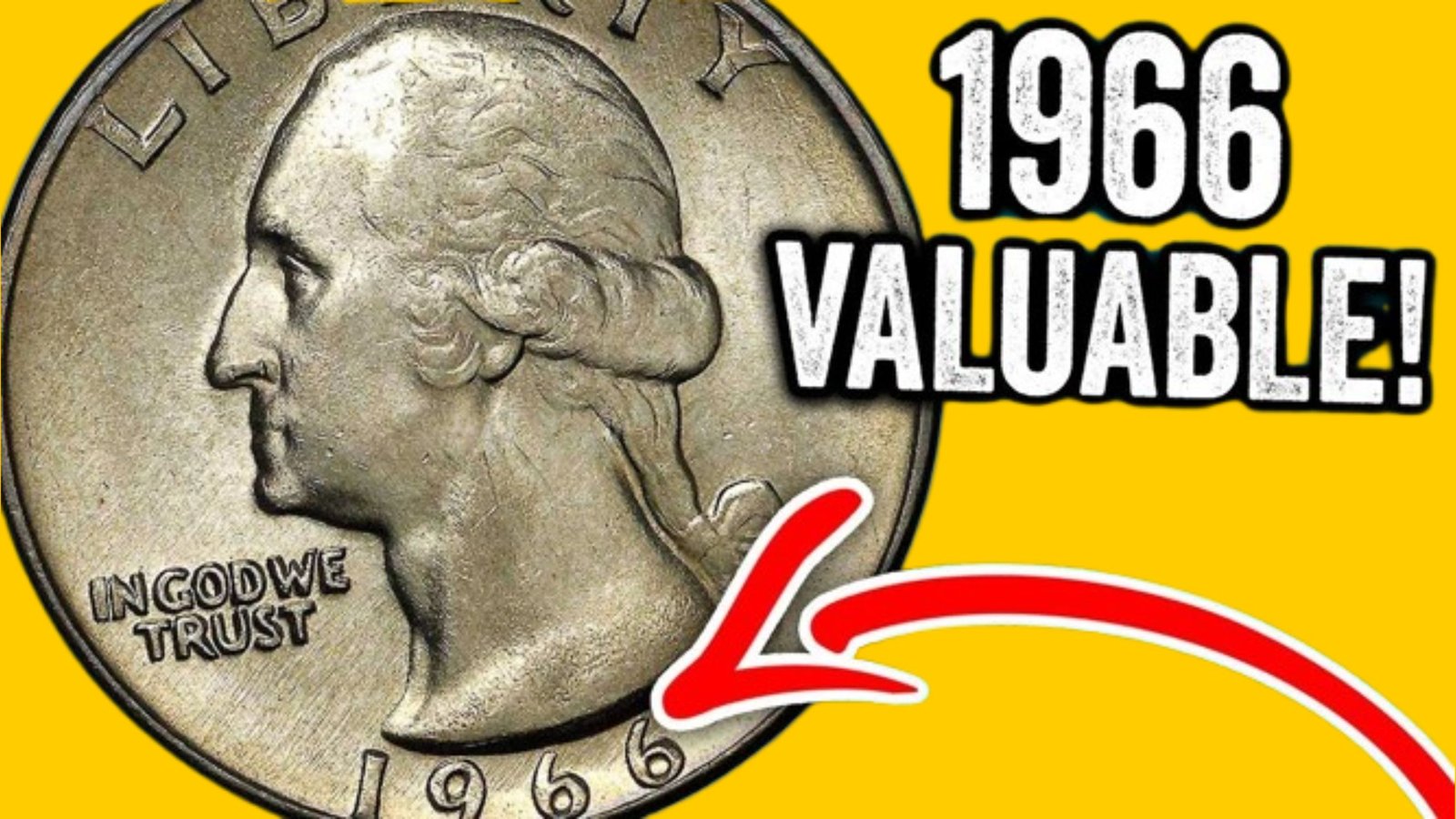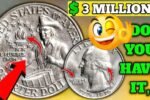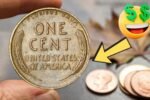1966 Washington Quarter : A coin that millions of Americans have likely handled in passing—the 1966 Washington quarter—has suddenly become a headline-making treasure. Recent attention from collectors and numismatic experts has spotlighted a specific variety of this coin that could fetch up to $20 million at auction. The most incredible part? It may still be sitting in someone’s loose change jar, completely unnoticed.
A Quarter from a Time of Change
The year 1966 was a transitional one for U.S. coinage. Just one year after silver was removed from the nation’s quarters, the U.S. Mint produced clad coins made of copper and nickel. As a result, the 1966 quarter is generally not considered a rare coin. However, it’s exactly this perception that allows unique errors or experimental strikes from that year to remain hidden in plain sight. The Washington quarter, introduced in 1932, had become so common by the 1960s that few paid close attention to subtle anomalies. That may be about to change.
What Makes This Quarter So Valuable?
Not all 1966 quarters are worth millions, but a very small number exhibit characteristics that make them virtually priceless. Some experts believe these ultra-rare versions were mistakenly struck on silver planchets instead of the intended copper-nickel ones. Others may feature dramatic minting errors, such as off-center strikes or double dies. If such a quarter exists in pristine condition with one or more of these traits, its rarity could propel its value into the millions. In fact, a coin with perfect condition and rare composition has been estimated by insiders to reach a value as high as $20 million—a mind-blowing number for a coin once used to buy a soda.
Still Circulating? It’s Possible.
What truly stuns collectors is the possibility that this rare 1966 quarter has never been discovered or removed from circulation. Because millions of these coins were minted and most are still considered ordinary, a rare variety could be hiding in a coin roll, change drawer, or forgotten piggy bank. People tend to overlook quarters unless they’re silver or ancient, so a unique 1966 specimen may be sitting unnoticed in someone’s everyday stash. That possibility is precisely what makes this story so compelling to the public.
Collectors and Experts Are On the Hunt
Once news of the potential $20 million quarter began circulating in the coin collecting world, the hunt was on. Collectors have intensified their search, and online communities are buzzing with speculation and shared finds. While some are skeptical of the valuation, the precedent for such astronomical prices exists. Other rare coins—such as the 1933 Double Eagle or the 1794 Flowing Hair Dollar—have sold for multi-million-dollar figures. If a perfect, anomalous 1966 Washington quarter surfaces, it could be next in line to join this elite group.
Why You Should Start Looking at Your Coins
You don’t have to be a seasoned collector to benefit from this buzz. The key to identifying a rare coin is simple curiosity and a close eye. Everyday people have discovered coins worth thousands simply by noticing something unusual. Whether it’s a strange weight, an off-center design, or a shine that doesn’t match other coins of the same year, any difference could be a clue. Given the astronomical estimate attached to the rare 1966 quarter, even the most casual glance could lead to a life-changing discovery.
Key Facts About the $20 Million 1966 Quarter
| Category | Details |
|---|---|
| Coin | 1966 Washington Quarter |
| Estimated Value | Up to $20 million (rare variety only) |
| Metal Composition (Standard) | Copper-nickel clad (no silver used after 1964) |
| Rare Traits | Silver planchet errors, minting anomalies, pristine grade |
| Circulation Status | Possibly still in public use |
| Collectibility Status | High, due to potential error coins |
Frequently Asked Questions (FAQs)
Q: Are all 1966 quarters valuable?
No, most are only worth their face value. Only extremely rare varieties with unique features or minting errors can be worth millions.
Q: What should I look for in a rare 1966 quarter?
Signs of being struck on a silver planchet, doubling in the text or date, unusual weight, or any minting error could indicate rarity.
Q: How can I know if my quarter is silver or clad?
Clad quarters have a copper-colored edge. Silver quarters are heavier and have a solid silver edge. Weighing the coin or testing its metal can help.
Q: Is it really possible that such a coin is still in circulation?
Yes, rare coins have turned up in pocket change, bank rolls, and inherited coin collections. It’s rare, but not impossible.
Q: How can I get a coin professionally evaluated?
You can contact a reputable coin dealer or submit your coin to grading services like PCGS or NGC for authentication and appraisal.
Q: Has a 1966 quarter ever sold for millions before?
Not yet publicly, but speculation and expert evaluation suggest one could if the right combination of rarity and condition is found.




